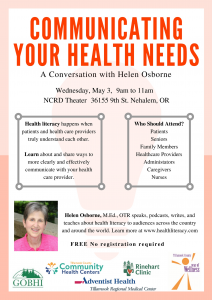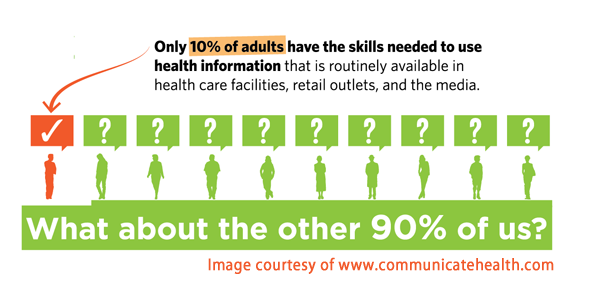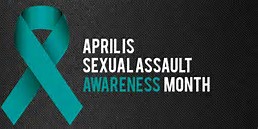
by Guest | Apr 22, 2017 | Being Well

Wednesday May 3 at 9 am – 11 am
North County Recreation District (NCRD) Theater
Health literacy happens when patients and health care providers truly understand each other. Learn about and share ways to more clearly and effectively communicate with your health care provider.
Who should attend? Patients, seniors, family members, healthcare providers, administrators, caregivers, nurses
FREE event – no registration required.
Join us for information about to more effectively talk with healthcare providers.

by Guest | Apr 22, 2017 | Being Well
by Heather White, Community Health Improvement Coordinator; Columbia Pacific CCO
Two of the most common questions asked during a visit with a health care provider:
“Do you understand?”
“Do you have any other questions?”
These standard questions are meant to give us as patients room to advocate for ourselves. Unfortunately, if you didn’t understand something or you do have questions, it can be hard to put them to words, especially if it’s the end of the visit and everyone is kind of in a rush to end the appointment. Ultimately, this can lead to your frustration and can even have negative effects on health. What if the thing you don’t quite understand is how and when you need to take a medication for your heart condition or diabetes? What if you weren’t quite satisfied with the answer to your question about what you can do to manage your pain aside from medications?
Or another scenario: You’re filling out all the forms at your provider’s office, and half the words are complete gibberish to you. Do you ask for help? Do you say you forgot your reading glasses even if they’re sitting in your purse? The forms are meant to help your provider narrow in on what you might need. For anyone who may not be familiar with medical terms, or who may struggle with reading, this can be more stressful than helpful in the moment.
These are just two examples of why health literacy is important.
Health literacy is defined as the degree to which a person has capacity to obtain, process, and understand health information and services needed to make health decisions. It is measured using a few very standard questionnaires, but the most commonly cited scale for measuring larger populations measures from “below basic” to “basic” to “intermediate” to “proficient” health literacy. Only 12% of adults have “proficient health literacy,” which really just means that nearly 90% of us do not have the understanding of medical terms needed to manage our health by ourselves. Two things to keep in mind based on that information:
First and foremost, there is zero shame in struggling with medical terms. You’re not alone if you do-in fact, you’re part of the majority. And if you’re among the14% of adults who have “below basic health literacy,” that’s still nearly 30 million people. It is very possible to be your own advocate by learning more terms, but also by asking lots of questions and being prepared for your visits.
Education, age, ethnicity, first language, annual salary, and health status are all factors that can add up to either poor or good health literacy, but having lots of education and money alone don’t make a person health literate. I’ve met people with PhDs working at universities who have to ask extra questions about what certain words mean or what those words mean for their health. I’ve met people who make a fair amount of money who have the same struggles. I have also met people who live on very little means and have maybe a GED but over time (and often out of need) are experts with health terms.
It is also important to remember that health is also very cultural. Some people in the United States were raised calling diabetes “sugar.” There are cultures that believe that epilepsy, a brain condition that leads to seizures and other health complications, is a spiritual gift rather than a health condition. Medical terms also change over time, so older adults or even professionals who went to school over 15 years ago may or may not be familiar with terms like “substance use disorder” or other terms that have changed more recently. It would be unfair to assume that we all somehow end up with the same vocabulary and understanding of health. Health literacy is important for our health and our relationships with our providers, but as with everything, it is an ever changing and complex issue.
So what can I do?
The best tip I can give anyone who struggles with medical terms is to prepare, prepare, prepare. Pre-write your questions and concerns, even if they don’t seem related to each other. Bring someone with you if you struggle with memory or so that you have someone to check your understanding with later. Bring all your prescriptions with you to an appointment. If you can’t ask your provider about your medications during the appointment, ask your pharmacist. Always ask if something is covered by your insurance before setting it up so you don’t get surprised later. Your provider is there to help you be as healthy as you can be.
The best tip I can give to providers, is to ask open-ended questions and assume people won’t understand medical terms. Ask your patients to repeat what you’ve told them in their own words rather than if they understand or have questions. Ask them what their plan is for implementing the directions you gave them. Most importantly, don’t assume that someone understands medical terms, no matter how they appear or if you know they are educated or well off. Every person has a different range of health education, and different places use different words. Meeting your patients where they are on health literacy makes it more likely that they can leave your office confident in their ability to follow advice, take their medications, and will greatly increase not only their overall experience, but yours as well.

by Guest | Apr 14, 2017 | Being Well
By Beth Hope, Sexual Assault Response Team (SART) coordinator
“The words of your enemies do not hurt as much as the silence of your friends.” Daisy Coleman

Daisy Coleman and Audrie Pott are young teens who were sexual assaulted and re-victimized by cyber bullying. Their stories are told in the documentary, Audrie & Daisy, which examines the ripple effects of sexual assault on families, friends, schools, and communities.
Audrie and Daisy’ stories are not unique. Whether or not we realize it, you and I have friends who have experienced sexual violence. Sexual Assault Awareness Month (SAAM) calls us to action: to acknowledge the prevalence of sexual assault; to understand its impact on individuals and communities; to commit to supporting survivors; to speak out against harmful attitudes and actions; and to take steps to prevent sexual violence.
The American Medical Association calls sexual assault a “silent, violent epidemic.” Every 98 seconds an American woman or man is sexually assaulted (RAINN, 2017). Worldwide, seven of ten women have experienced sexual violence in their lifetimes (WHO, 2013). Sexual assault affects women, children, and men of all racial, cultural, and economic backgrounds.
I found this to be true when I started working as a sexual assault advocate and began telling friends about my new job. I had to be prepared to listen, because everyone I told had their own story to tell. Before taking this job, I had no idea that sexual assault impacted so many people—including, basically, everyone I knew.
Unfortunately, survivors almost always blame themselves, especially victims of childhood sexual abuse. They think that somehow they bring this on themselves. Perpetrators of sexual violence like to blame their victims. Worst of all, blaming victims of crime is a culturally acceptable practice, especially the victims of sexual violence. Victims of theft, for example, are not usually held responsible for their victimization. Victim-blaming is well illustrated in the video, The Rape of Mr. Smith. Understanding victim-blaming and holding awareness of how we talk about sexual violence gives us an opportunity to use our voices to change the culture.
In addition to immediate physical and emotional costs, sexual assault often carries associated consequences such as economic disruption, housing instability, and long-term health impairment. “Sexual abuse is among the most destructive of crimes, brutal and devastating in the moment and carrying the potential to haunt victims forever.” (National Prison Rape Elimination Report, 2009) It is a form of trauma, and as such can result in any number of mental and physical health conditions, including the development of post traumatic stress disorder (PTSD). The effects of sexual assault are felt not just by the victims, but also their families, friends, coworkers—their community, our community. It doesn’t have to be this way. The best way to mitigate the development of PTSD is to listen and believe when someone tells you that they have been violated.
As an advocate, it is a privilege for me to sit with survivors and listen. I witness the pain felt by women and men who have experienced sexual violence. I grieve when I hear survivors tell their stories. I sense the sorrow of their friends and family members. What impacts me the most is the strength of survivors. In spite of experiencing deep violation, they demonstrate courage by speaking out, by taking brave steps, by moving forward, by surviving.
Another way to change our culture is to learn how to respond if someone tells you that that they have sexually assaulted. It is not as difficult as it seems. First, listen. Judging the person or the situation can be harmful. So, listen. Second, believe them. They’re telling you because they trust you. You don’t have to be an expert or need to judge the situation. Listen some more. After listening, here are some things you could say.
- I believe you.
- It’s not your fault.
- You are not alone.
- Whatever you’re feeling, it’s normal.
Sexual Assault Awareness Month (SAAM) provides an opportunity for everyone to learn more about preventing and responding to sexual violence, supporting survivors, and speaking out against harmful attitudes and actions. To prevent this “silent, violent epidemic,” we must educate ourselves and speak out.
This SAAM month, TCWRC invites you to take part in awareness and fundraising activities:
- Watch the Audrie & Daisy documentary, streaming on Netflix; host a screening and talk about it with parents and friends.
- Attend the Ruth Wariner talk on April 18, TBCC, 5:30-7:00 pm.
- Attend the TCWRC fundraiser, the Harlem Ambassadors, April 20, 6 pm, Tillamook High School gym. Proceeds go to survivor services.
- Come by the TCWRC office (1902 Second Street) to pick up teal ribbons to tie on your vehicle and to wear on your jacket.
- Make a note of the TCWRC 24/7 helpline number to give to friends: 503-842-9486.
by Michelle | Apr 5, 2017 | Being Well
By Michelle Jenck, Year of Wellness Coordinator
You’ve probably heard the saying, “An ounce of prevention is worth a pound of cure.” The same can be said for making wise investments in health during early childhood to avoid the cost of poor health later in life. These investments begin before a child is even born.
Research shows that maternal health is a huge predictor of a child’s future health. What mom eats is what the baby eats. If mom is stressed, the baby’s nervous system is stressed too. Avoiding tobacco and alcohol and maintaining a healthy eating pattern during pregnancy are critical to ensuring proper growth and development. Self-care for mom is also care for the baby. Parents continuing these habits of healthy eating and activity throughout a child’s life models this lifestyle and encourages a child to adopt a healthy, active lifestyle throughout their life.
Other things we know from established research are that nutrition and movement play a significant role in how well a child learns. A positive, encouraging and stable environment protects a growing child’s brain from the negative impacts of trauma. While these benefits are most critical during the first five years of a child’s life, they don’t end there. In the case of tobacco use, research shows that, students who do not use tobacco products before age 21 are far less likely to ever start. Additionally, nutrition, physical activity and healthy relationships are directly tied to a student’s academic, social and emotional health, thereby contributing to life-long success.
YOW partners are supporting childhood health and many other national observances during the month of April, including the “Move More” campaign. No fooling – you can win $100 VISA gift card by signing up for the YOW Tracker. Session #2 starts April 1st. Go to tillamookcountyhealthmatters.org or use the YOW app to get in it to win it.
On April 5th, National Walking Day events will be held throughout the county – from Manzanita, starting at Hoffman Center Garden with Rinehart Clinic, to Kilchis Point with Gary Albright and a guided tour, to multiple walks starting at Tillamook Bay Community College, Tillamook Regional Medical Center and in South County, at the Kiawanda Community Center. Little steps lead to big gains. Get moving – Get healthy for good!
April is National Child Abuse Awareness month, the pinwheel gardens and bouquets throughout Tillamook County help to promote our community’s support and commitment to the social and emotional well-being of children and families. On April 18th, YOW presents a special book reading and discussion with New York Times best-selling author Ruth Warnier, The Sound of Gravel, at TBCC who discusses her own childhood trauma and recovery.
Early Childhood Screenings are back at the Tillamook County Fairgrounds, on April 19, 20 and 21st. FREE annual well-child check includes twelve comprehensive screenings for ages 2 to 6. Call Adventist Health at 503-815-2292 for an appointment. The Tillamook County Community Health Centers will present a community Wellness Fair at TBCC on April 27th with FREE screenings for college students, their families and all community members.
Then join us at the YMCA’s Healthy Kids Day featuring Lego Block Fest and Family Fun Fair on April 29th. This FREE event is for everyone (you don’t have to be a Y member), and will include resources and activities for kids of all ages.
These are just a few of the dozens of health and wellness events going on in Tillamook County in April – there are also hikes and walks with Explore Nature, new classes starting and much more. Go to www.tillamookcountyhealthmatters.org or www.tillamookliving.com for more information and details about all the events in April sure to get you hopping right into health and fitness.

by Guest | Mar 14, 2017 | Being Well
Ash Wednesday, March 1st – Start of Lent
Millions of Christians are preparing to celebrate Lent – a time of year that many non-believers may associate with fasting or abstinence.
But there is a lot more to the religious observance than giving up something, as it is regarded as a period of spiritual preparation to grow closer to God in the run-up to Easter.
Certain days are excluded from Lent, and many Christian denominations observe the period in different ways. Here is everything you need to know about Lent – from the meaning behind it to the traditions that many worshippers follow.
Lent takes place every year in the 40 days leading up to Easter, and is treated as a period of reflection and a time for fasting from food and festivities.
It symbolizes the days which lead up to Jesus’ crucifixion and subsequent resurrection, when Christ spent 40 days and nights alone in the Judaean Desert being tempted by Satan.
When does Lent start?
This year it begins on March 1.
The date varies from year to year, starting in either late February or early March.
However, for Eastern Orthodox churches it begins on Clean Monday (February 27 this year), two days before Western churches.
When does Lent end?
There’s no easy answer to this.
For Western churches the 40-day period of Lent ends on Holy Saturday (April 15), the day before Easter.
But the liturgical season of Lent ends two days earlier on Holy Thursday (April 13).
For Eastern churches it ends on April 7, the Friday before Palm Sunday.
What days are excluded from Lent?
Lent lasts 46 days, but Sundays are not included in the overall count.
That means it is observed for 40 days in the run-up to Easter, and is often a time when instead of fasting people will give up certain food and drink such as chocolate and alcohol.
The six Sundays are not counted because each one is seen as a “mini-Easter” celebrating Jesus’ victory over sin and death.
What do people give up for Lent?
Lent is traditionally marked with fasting, abstinence and prayer.
Most believers tend to give up something until Lent ends to “purify” their bodies.
For children it could be something such as chocolate, sweets, television or certain toys, while adults tend to give up things such as alcohol, coffee or smoking.
Some households may give up meat, eggs and dairy products.
Many believers use the time to volunteer at a charity or donate money to a good cause.

by Guest | Mar 6, 2017 | Being Well
By Heather White, MS, Community Health Improvement Coordinator
Columbia-Pacific Coordinated Care Organization
When I first moved to Tillamook County the first place I looked to plug in was a local church. I’ve done this everywhere I’ve lived, as my parents did when the Navy would move us. They later explained why it was so important: being in a faith community gives a sense of belonging that is hard to build elsewhere. What they didn’t know at the time is that they were not only giving me somewhere to belong, they were giving me access to a longer, healthier life.
Even if you aren’t a person of faith, there is a wealth of research surrounding the connection between faith and long life that can be practiced in or outside a church. In the Blue Zones’ initial studies, 258 of 263 people over the age 100 around the world belonged to a faith, and the effect on their physical and mental health was the same no matter the religion or denomination. Here are some of the common principles that experts point to for explanation:
Purpose. Knowing your purpose has an immense effect on mental wellbeing. People of faith tend to be driven by loving and serving God and mankind, striving to be good, and so on. It can be helping people, raising a healthy family, leaving the world better than they found it. Knowing your purpose gives perspective to life’s ups and downs and provides direction, building resilience against trauma.
Meditation and Prayer. Coping with stress can come in many shapes, but taking an opportunity to purposefully “down shift” from the day on a regular basis reduces the effect of stress on the mind, body, and heart. It can even reduce inflammation! When, how, or who with doesn’t seem to make a difference, as long as you are taking a mental pause from the daily grind.
Community. Being around healthy people makes you healthier, too. This simple principle matters as much in faith and mental health as anything else. That does not mean we avoid being in relationship with people who are struggling. The more we can come as community members to a place where we can be together and sharing in our purposes regardless of what we struggle with, the more we share and increase the benefit. People in a church can disagree on theology or politics and still reap the benefits of community. Even better if that church or group regularly comes together in faith and then goes out to serve the broader community together. Outside the church this can be a class, a volunteer group, or like-minded individuals who meet regularly.
Whether Protestant, Catholic, Jewish, Muslim, Sikh, Buddhist, Wiccan, Agnostic, or Atheist—the benefits of belonging to something greater than yourself are undeniable and key to living a long, resilient life. Do you incorporate these principles into your life? If not, it’s never too late to start! And if you’d like more information, visit tillamookcountyhealthmatters.org and join the Year of Wellness. Peace be with you and Namaste!







